Text
"Popular Hiking App Releases 27,000 Trail Maps to Download for Free, Increasing Hiker Safety"
To that end, the Irish hiking app "HiiKER "has released all trail maps in its database for download free of charge. They can either choose to download them directly to their smartphone or as a GPX file to their smartwatch—saving the battery of their device while away from electricity access.
I haven't tried this app yet, but thought this new was worth a share
1 note
·
View note
Text
Researchers Develop Glowscope that Turns Smartphone into Sensitive Microscope Normally Costing $100,000
"It was mostly new smartphones and tablets that were tested, from both Apple and Samsung models, with timelapse viewing done at resolutions of 1080p and 120 fps.
The team listed the Amazon.com product links for all components, which totaled between $30-$50."
12 notes
·
View notes
Text
USA Native Plant Resource Masterlist
Because Google is totally useless and won't help you with ANYTHING
iNaturalist: Take photos of living things you see, post them, and the community will identify them for you. Data from iNaturalist is used in scientific research.
Wildflower.org Plant Database: Enter search criteria and find some plants. Very useful if you're looking for plants with specific qualities or know what you have in mind.
Native Plant Finder: This website is still in beta and is a work in progress, but it will show you plants for your area ranked by the number of butterflies that use them for their caterpillars.
WildflowerSearch: AMAZING resource for identification and for learning about new plants. Shows you where plants are native/not native, TONS of search filters.
Native Plant Trust: A New England organization, but probably useful to anyone.
Northern Forest Atlas: Great images and identification resources for trees; has good pictures of bark, seeds, buds, leaves.
FloraFinder: Another plant database site that's being slowly built up by a passionate nerd.
MonarchWatch milkweed by USA ecoregion: Tells you what milkweed species you should plant for monarch butterflies.
Native Beeology: Not plants, but a closely related subject.
I will add more and post an updated list as I find more.
6K notes
·
View notes
Text

In movies they always make lighting a fire look as simple as rubbing two sticks together, but it is much harder than that. To help get you started, here are the basics to know before you light your fire.
FIRE PIT SELECTION
Choosing where to light a fire may seem like the easy part, but there are actually several things you should consider.
Is it close to fire-fighting equipment? This does not necessarily mean a fire-extinguisher. In the wild, you can use water, sand, dirt, or anything else that will quickly smother the flames.
Is it sheltered from wind? Wind can cause a fire to go out of control in a matter of seconds, so put your fire where you have control how much of an oxygen flow it gets.
Is it cleared of leaves and twigs? Clearing things that are flammable such as leaves and twigs is important for obvious reasons.
Is it too close to your shelter? Your fire needs to be close to your shelter if it is your heat source, but not too close.
Is it surrounded by rocks or dug-in? Surrounded or digging-in will help keep the fire from trying to spread.
Is it away from tree overhang? “Tree over-hang” is basically just branches that hang over you. This could pose a problem if the overhang is too close to your fire where it could could be lit by flames or sparks.
Is it away from trees and roots? Roots are just as dangerous as trees when it comes to lighting on fire. Roots are also very difficult to put-out once lit.
Fire Basics
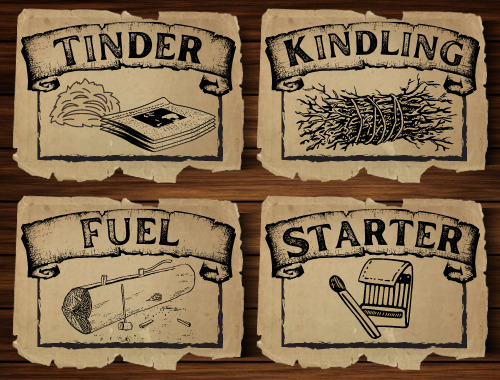
FIRE STARTING
Tinder: The small material that is most easy to catch fire. Examples: old mans beard, paper, dryer or pocket lint, dry grass or leaves, birch bark, blubber oil
Kindling: Branches or wood with a small to medium thickness that will be used to light after the tinder. Put the thinnest pieces closest to the tinder, then gradually get larger.
Fuel Wood: The biggest pieces of wood you use to keep your fire going.
Starter: What you start your fire with. Examples: matches, flint and steel, lighter, so on.

FIRE TRIANGLE:
A process of describing what fire needs to keep from going out. The three are:
Oxygen
Heat
Fuel
Remove even one of these and the fire dies.
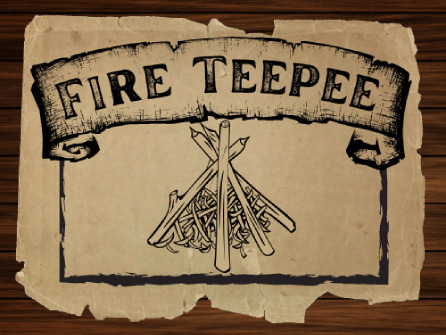
TEEPEE FIRE
The method of fire building most people learn first. With this, tinder is in the center, and kindling is balanced against each other overtop of the tinder (like a Teepee) and the fuel wood is added over that.

LOG CABIN FIRE
The second fire type people are likely to learn. Tinder is placed in a small pile, and kindling or fuel wood is layered around in in a square (like a log cabin). Sometimes this is started with a tipi in the middle to aid fire-starting. The log cabin method is great for cooking.

FIRE WALL:
A wall you build on the opposite side of your fire from your shelter. The purpose of this is to block wind and redirect heat.
0 notes
Text
The Writer of Jaws Regretted Writing It

Living about 12 hours from the nearest coast, it is safe to say that I am no expert on oceans. Despite that, I still do my best to learn about interesting facts and issues about it.
For example, did you know that 50-80% of the worlds oxygen comes from the ocean? Much of the oxygen is thanks to phytoplankton, and sharks actually play a huge role in keeping their populations healthy. They feed on the creatures that feed on phytoplankton, so they prevent overgrazing.
Putting it simply, no sharks means more overgrazing, which means less oxygen for us.
“When apex shark populations decline, it can cause rapid increases in their prey populations, creating a ripple effect throughout the food chain known as a trophic cascade”
Shark Angels
Yet there is still minimal protection on sharks, in part because of fears that the movie “Jaws” fueled. It was the worlds first summer “blockbuster” movie —named for the way people lined up down the block to see it — and was even how the word was born.

The film created a boom in shark sport fishing, and something called “The Jaws Effect” where people(even today) think shark encounters are much more dangerous than they really are.
The impact of it on sharks was so detrimental that the movie’s director, Steven Spielberg, felt guilty for his creation.
“I truly and to this day regret the decimation of the shark population,” Spielberg told BBC, “because of the book and the film.”
The Washington Post
Since the movie was released, the shark population has seen a decline of over 50%.
Perhaps the person with the most regrets was Peter Benchley — the author of the book — who then spent his time trying to save sharks and undo the damage caused to them.
“What I now know, which wasn’t known when I wrote Jaws, is that there is no such thing as a rogue shark which develops a taste for human flesh,’’ Benchley told the Animal Attack Files in 2000. “No one appreciates how vulnerable they are to destruction.’’
Boston.com
Sharks don’t have hands to reach out and feel the world with, so most shark attacks are bite-and-release. They grab hold, realize its not their usual meal, and let go. You are actually more likely to be killed by a vending machine than a shark, and many people have a positive interaction with a shark without even knowing it.
There are only about 9 shark-caused human deaths a year, while in comparison, an estimated 100 million sharks are killed per year throughout the world.
Another danger facing sharks at the hands of humans is all because of fishing. One of the most common reasons is for Shark Fin Soup. The shark adds no flavour to this high-status soup, only texture, but is wildly popular.
"It is not surprising that the popularity of a dish embodying such aristocracy and elitism declined once the Chinese Communist Party came to power in 1949. However, by the late 1980’s China had undergone far-reaching market-economy reforms which led to a rapidly expanding upper and middle class, who were eager to showcase their new-found wealth; shark fin soup once again became a way of doing so. Considering that the price per bowl can range from just HK$5 (45p) to an incredible HK$2000 (£180) depending on the type, style and preparation of the shark fin served, the dish is a viable option for a large number of people."
"Shark fin soup: a dangerous delicacy for humans and sharks alike," The Guardian (Recommended read)
The popularity of the soup has led to a heavy increase in fin hunting, to the point where 100 million sharks are killed for their fins every year. To make it extra cruel, the meat of the shark itself is not worth much, so the sharks — still alive — are often thrown back in after their fins are removed. Without the fins, they can not swim, so they endure a slow death.
One thing to note is that the bigger the sea creature, the higher the levels of mercury, and shark is no exception.
"The methylmercury is absorbed by the bigger animal, and — since the bigger the fish, the longer it lives and the more it eats — larger fish species accumulate a lot more methylmercury in their body. In other words, fish higher up the food chain “bioaccumulate” more methylmercury than do those lower on the food chain."
"So Where Does All That Mercury in Fish Come From?" Food Print
The other reason is for medicine and vitamins. For example, recent demand for Omega 3 supplements is seeing a new rise in shark overfishing, despite more sustainable choices, such as seaweeds, are comparable, if not better for you.
#shark#sharks#sea creatures#nature#NatureScience#nature facts#naturefacts#naturescience#nature science#jaws#ecofriendly#ecosystem#ecology#animals
2 notes
·
View notes
Text
Common Wilderness Survival Shelter Mistakes
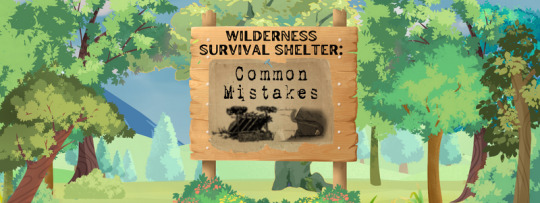
I used to be a wilderness survival instructor, so I thought I would make a list of all the mistakes I used to see.
Some of these are not technically mistakes, but instead skipped helpful additions, but I decided to include them as well.
1. It Is Built Too Tall
For some reason, people seem to think that they should be able to stand or sit inside all shelters. While this may be true for some, as a general rule, the more empty air in the shelter, the colder you will be. For a lean-to, have it no higher than the tallest person’s shoulder. For a A-Frame, have it no higher than your hip.
2. It Is The Wrong Shelter Type
A lean-to is great if you are in a group, but if you are alone and can’t get your fire lit, then it is not a good shelter for you in the winter. Instead, switch it for a A-frame or another shelter that will stay warm with your body-heat rather than depending on a fire.
3. It Has No Firewall
Some people in warmer climates don’t think a firewall really helps reflect heat, but once you get down to -30c, you will learn that they work.
A firewall is a wall you build on the opposite side of the fire from your shelter so that it reflects heat back towards you. As well as that, it will also help block wind.
4. It Is Too Wide
As a general rule, your shelter should be only just a tad bit longer than you are for the same reason as number 1. When selecting a spot, one technique is to lay on the ground where you want the shelter to be in order to see if it will fit properly.
5. No Lean-to Walls
Many survival teachers do not teach to build walls on the sides of a lean-to, but I always do. Not only will it help keep in heat and block wind, but the extra walls can make the sleeper feel more protected.
6. The Shingles Are Wrong
When people are adding branches to a shelter to act as shingles, many beginners start from the top and work their way down. If you do that, you risk directing the water into your shelter instead of away. Start from the bottom, then work your way up.
7. Moss For Bedding
I know there is nothing better than laying on a bed of moss, which is why there is a strong temptation to use it for bedding. The problem is that moss tends to release moisture at night, so you might wake up very wet and cold. As well as this, you do risk bringing insects into your shelter.
Instead, consider smoking the moss to dry it and remove insects. In the meantime, stick to other bedding.
8. Not Enough Shingling
A test that I learned is that if you go into your shelter and you can see any light leaking through the roof, you need to add more to it. If light can get in, than water can too and heat can escape.
9. Hole Shelters
With many situations(not counting snow or mound-shelters) digging your shelter into the ground could end up with you sleeping in a swimming pool. Soil holds onto moisture and leaks it out like a sponge, so even if your shelter is perfectly sealed up during a good rain, water can leak through the shelter inside. There are exceptions to this, but when in doubt, build your shelter above ground.
Once at survival-instructor camp, a group of men spent hours on digging out a firepit complete with dirt-chairs deep in the ground. It certainly looked nice when they went to bed, but they woke up to a rain-filled pool.
10. No Bedding
The ground is a heat-sapper. As Bear Grylls often says, “one layer below is worth two on top,” and he is very right. As well as helping to keep you warm, comfort is also important. You will need a good nights sleep in order to complete your tasks for the next day.
As a starter, you can just lay evergreen bows or something similar down as a bed.
11. No Trench
While you should build your shelter on a slight incline to direct water away from your shelter, trenches are also a commonly missed addition.
To prevent water from puddling into your shelter, dig a small trench around your shelter, and downhill away from it. Water will follow the easiest path, so this should keep you nice and dry.
#wildernesssurvival#survivalshelter#survivalshelters#survival shelter#survival shelters#wilderness survival#outdoor#outdoors#wilderness#bushcraft
0 notes
Text
Have You Seen a Pika?
The pika is a small mammal, and while they might look like rodents, they are actually in the same family as rabbits. They can be found in mountain areas of high-elevation, and the species where I live(Ochotona princeps) make their home in rocky habitats.
For anyone also in Alberta, Canada, they are easily found at different hikes along highway 40 in Kananaskis Country. Just look for areas of rockfalls.
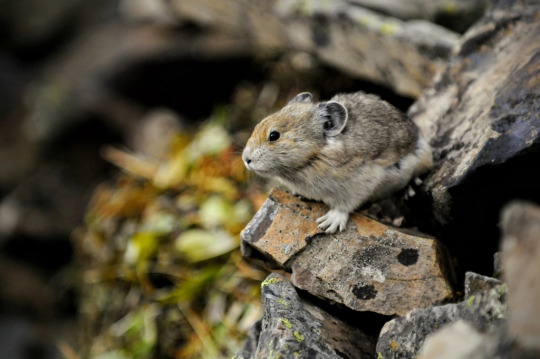
These little herbivores eat a variety of green plants, and can actually absorb enough water from that vegetation to not need to drink. They are also non-competitive with other animal species, so peacefully share their area with other animals, such as chipmunks and marmots.
If you want a nice photo of one, go sit quietly amongst the rocks and wait. Though you may have scared them into hiding when you arrived, they will emerge soon so long as you keep your movements very slow.
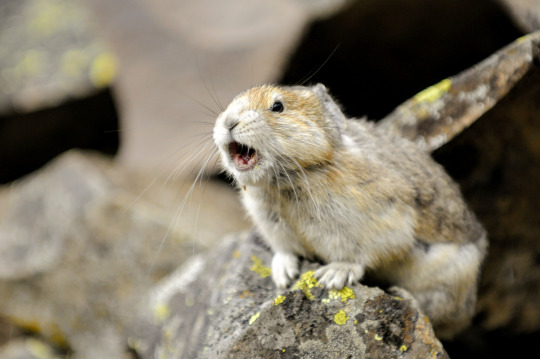
While sitting there, you may hear them let out an adorable little “peek” scream. This scream is to alert to danger, and also is a territory defense call directed at other pika.
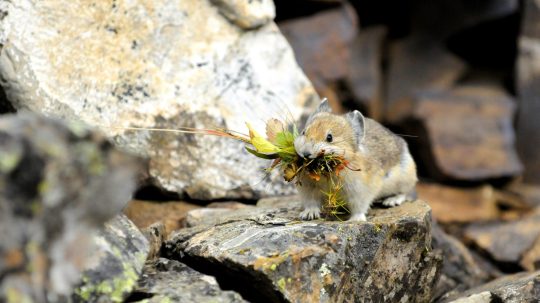
Due to their sensitivity to temperatures, Pika are an indicator species for climate change. They rely on cool temperatures, so if days become warmer on average, these little critters move further up the mountains to escape the heat.
#naturescience#photography#nature#nature facts#naturefacts#nature science#pika#animal#animals#cute animals#outdoors#hike#hiking#alberta#albertacanada#canada#hikealberta#hike alberta
2 notes
·
View notes
Text
Forests Clean Water

Years ago, I took an online course on mountains, and one fact that stuck with me from it was about how people in the United States accidentally polluted the water in New York City by cutting down trees.
It was the 1800’s, and the trees in the Catskill Mountains were cut down to accommodate growing populations, and as a result, the water quality for New Yorkers deteriorated rapidly. Yes, the agriculture pollution and sewage did play a part, but the trees were decided to be such a big problem, that they decided something had to be done.
So, they purchased land, and 18000 the natural ecosystem.
How does this all work? With watersheds.
“Watershed: an area of high ground from which water flows down to a river”
Cambridge Dictionary
Imagine it is raining in a forest. Droplets hit the ground, and —thanks to the vegetation which slows runoff — it is absorbed into the soil like a sponge.
As the water move through the soil, microbes are actively removing harmful pollutants, silt is filtered, and plants are helping to remove fertilizers.
Some of the water will end up in our lakes and streams, but will be much cleaner than when it started.
"The ability of forests to aid in the filtration of water doesn’t only provide benefits to our health and the health of an ecosystem, but also to our pocketbooks. Forest cover has been directly linked to drinking water treatment costs, so the more forest in a source water watershed, the lower the cost to treat that water. Forests provide these benefits by filtering sediments and other pollutants from the water in the soil before it reaches a water source, such as a stream, lake or river."
American Forests
Since this intake and outtake of water is gradual, removal of these forests can even to lead to a higher chance of drought and floods.
youtube
youtube
#NatureScience#nature#nature facts#naturefacts#naturescience#nature science#environment#ecology#ecosystem#outdoors#forest#forests#Youtube
7 notes
·
View notes
Text
Are Wolves The Reason Caribou Are Dwindling?
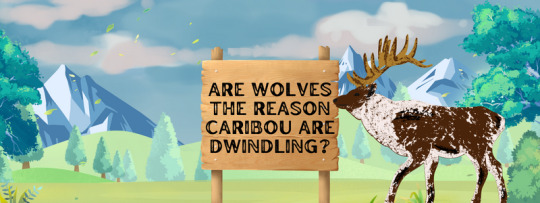
The province of British Columbia, Canada, is currently culling wolves as an attempt to save caribou populations, but are we putting the blame in the wrong direction?
While announcing that they are saving caribou, governments fund programs where wolves are culled (often by being shot from a helicopter).
It is not without it’s criticism, however.
"Contractors hired by the B.C. government are shooting wolves from helicopters this winter, part of a five-year plan to protect endangered caribou that was approved by the province despite its own public consultation that showed a majority of residents are against the hunt."
B.C. wolf hunt resumes despite public opposition – Globe and Mail
In a wolf pack, only the mother and father breed (the rest are their children), and normally 4-6 pups are born in a litter once a year. Once the children wolves are old enough, they set off on their own to find their own mates to start their own packs with.
According to the British Columbia government, at least 37% of the South Peace caribou herd deaths are a result from wolves. They also point out that Grey wolves are not an endangered or threatened species, and that their numbers are raising each year.
"Mountain Caribou are at risk of extinction. 98% of the global population of caribou lives in B.C. The current population is about 1,500, in 15 separate herds throughout B.C."
BC Fact Sheet
So, are they to blame for the drop in caribou? Perhaps partly, but they are likely not entirely to blame.
In the winter or in high predator environments, caribou mostly eat lichen. One problem with this food source is logging. Some studies are showing that lichen is typically only found treed areas that are at least 63 years old, which means that it will take at least that long for tree-planting programs to be effective. Other studies suggest that the timeline is closer to around 80 years.
As well as that, it is common practice to spray glyphosate onto forests to remove competition for logging trees, and that spray is shown to kill many types of lichen.
"A study published in May found that over the last five years, the British Columbia government has permitted more than 900 sq km of land to be logged, despite the forests being listed as critical caribou habitat. In the last year, 314 logging cut-blocks have been approved in areas where the caribou are most vulnerable."
The Guardian (2020)
Changes in climate also changes caribou migration patterns, as well as birth rates. Caribou decide when to leave and how quickly based on ground conditions, and insects often help encourage that movement.
"Insects are relentless pests during summer in the Arctic. Caribou spend a great deal of energy searching for relief from the mosquitos, botflies, and warble flies that plague them. To avoid the insects, caribou move en masse to higher ground or closer to the coast, or they wander in search of snow patches where there are fewer insects. All of that avoidance means much less eating."
NPS
If the insects harass them too much and they do not eat enough, that can lead to a drastic decline in numbers. As well as that, if the weather warms consistently, green growth may out compete the lichen caribou eat.
Then, of course, there is human encroachment. As humans continue to spread out into the wilderness, animals are displaced.
Lastly, it is also worth pointing out that in a study, bears, cougars, and wolverines, were found to be more deadly to caribou than wolves, but wolves always receive all the blame.
With all these combined, it is likely a cumulative effect impacting caribou populations. This includes climate/weather, logging, glyphosate, urban spread, and more.
#caribou#wolves#wolf#nature#NatureScience#nature facts#naturescience#nature science#naturefacts#environment#enviromental#ecology#ecosystem#ecofriendly#outdoors#forests
0 notes
Text
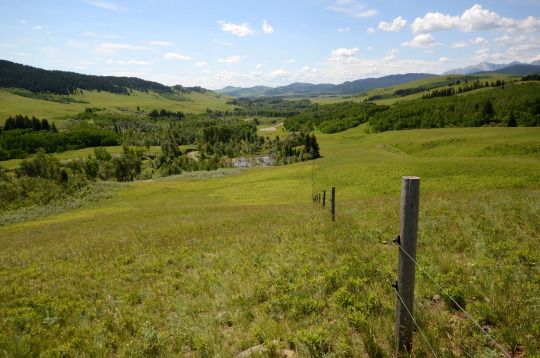

Located west of Claresholm, Bob Creek Wildland Provincial Park is a protected area that has rolling green hills, gorgeous wildflowers, and very few people in comparison to other parks.
Within it is a region called the Whaleback(named due to it's shape) which is a unique area.
"The Whaleback is considered one of the best representations of montane landscape, flora and fauna in Canada, with very high habitat diversity. Montane compromises less than 2% of the province’s land area and occurs only where warm Chinook winds blow away the snow cover for much of the winter. The Whaleback is in fact the largest undisturbed stretch of montane landscape in Canada, and its biodiversity has brought it national significance."
Alberta Wilderness Association
The Bob Creek itself is a lazy trickle into a swamp, while the rest of the park is dramatic hilly grasslands.
Much of the land is marred by ATV use, but while it can make for some uneven trails, the ruts did not diminish the beauty of the area.
Notes:
It is an open area, but do keep watch for ATV’s and step off the path if one is coming your way.
There was a bin for maps, but it does not look like it has been filled for a very long time. It is available online.
No outhouses. If you have to go, stop at the Maycroft Provincial Recreation Area


#hike#hikes#hiking#hikealberta#HikeAlberta#alberta hiking#alberta hikes#albertahikes#albertahiking#alberta#canada#travelalberta
1 note
·
View note
Text
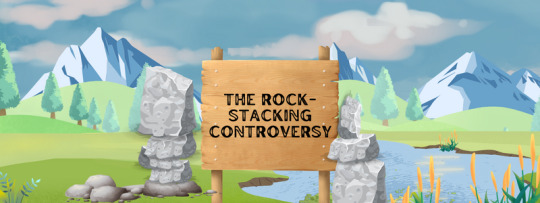
The Rock-Stacking Controversy
If you visit a riverbank or rocky area, you might see hundreds of them all stacked up like a little army. You might call them rock-stacks(which is what I will call them for this post), inukshuks, cairns, or something else entirely. No matter what you call them, they are an ongoing source of controversy in the outdoors community.
In a video I saw many years ago now, a woman was videoing and yelling at someone who was kicking rock-stacks down, and the comments section could not agree on who was in the right. Since then, I have seen posts of people talking about how a “rock-kicker made their kid cry” as well as posts along the lines of “I tried to explain to this mother why not to stack rocks, and she yelled at me.”
The rock-stacks are now being built in mass amounts(often for a photo), and has created a divide.
Rather than argue about what or what not to allow people to do, in this post I am going to tell you all the sides and facts I can so you can make your own opinion.
The “They Are Fun” Side:
This side argues that they are harmless fun. They say that kids and adults alike need time climbing trees, playing in stream, and exploring, in order to truly learn to appreciate nature.
"Rock stacking is an outdoor activity that promotes motor skills and dirty hands."
Fatherly
"In modern times, many people use stacking stones to relax, relieve stress, meditate, create, play, and learn."
Rhythms of Play
The “They Are Art” Side:
It takes time and perfect balance to stack the rocks just right, and each rock-stack tells the story of someone who did just that. They are art, and should not be removed because they make this group happy to see.
As it turns out, you don’t need sleight of hand or even mud to design gravity-defying cairns. You do need a bit of patience, though, and a knack for “knowing the rocks,” according to Michael Grab, a land artist who has been balancing rocks since 2008. He builds his sculptures with rocks from the natural landscape, usually alongside water.
Rock balancing is an internationally recognized craft; Grab has been invited to design sculptures at rock balance festivals in Italy, Costa Rica, and Boulder, Colorado, where he spends most of his time“
THE ZEN OF ROCK BALANCING” by Garden Design
The “They Are Ugly” Side:
Yup, the opposite as above. This side says that they hike to be out in nature, not to be reminded of humans by all the “ugly little rock stacks” destroying the natural scenery.
The “They Are Environmentally Bad” Side:
Environmentalists and leave-no-trace hikers argue that removing rocks displaces wildlife who use the rocks as homes or to hide under, as well as helps cause soil erosion.
“When rocks are relocated, this also can destabilize the soil and make the area vulnerable to erosion. In the case of removing rocks from rivers and other water bodies, you may be disrupting aquatic habitats and, in extreme cases, could even be affecting the natural flow.”
The Washington Post
The “They Will Get People Lost” Side:
Backcountry hikers argue that they are often used as trail markers for places where trails are not clearly marked, and that making random rock stacks can get people lost.
On the other side of this argument, they also say to be very careful which stacks you kick down, because you could be kicking down a trail marker.
"Stone sculptures are often built to mark trails and to help hikers find their way up and down the mountains."
CBC
_____
So, as you can tell, people can be very passionate about what side they are on. What about you? Which side are you on in this controversy?
#rockstack#rockstacking#rock stacking#rock stack#balancingrocks#rocktower#hiking#hiker#hike#albertahiking#hikingalberta#outdoors#nature#environment#enviromental#environmetalists#ecology#ecosystem#education
1 note
·
View note
Text
Skip to content
Troll Falls: Kananaskis (Alberta)
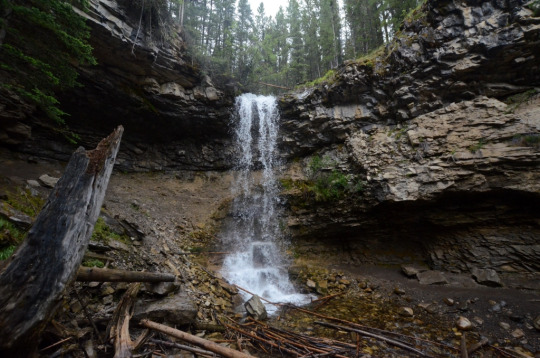
Location: Troll Falls, Kananaskis, Alberta, Canada
Distance: 2.1 miles
Hike Type: Easy, Out-and-Back
Troll Falls is a waterfall that is dramatically falls over a half-bowl of rock. It is a very easy and well-maintained hike, and likely one of the most popular in the area so expect many people on the trail with you.
I do not recommend climbing to the back of the waterfall. The rockface is very slippery and the fall could be deadly.
This hike is also popular in winter.
Update: Since I was last on this hike, trail additions, including railings, have been added.
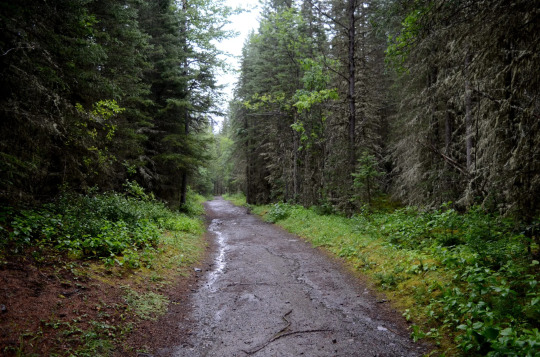
#hiking#hike#hikes#AlbertaHikes#alberta hikes#HikingAlberta#hiking alberta#alberta#canada#travel alberta#TravelAlberta
3 notes
·
View notes
Text
Plants Can Smell The World Around Them 🌷👃

Can plants smells? Well, it seems like…yes.
“Plants know when their fruit is ripe, when their [plant] neighbor has been cut by a gardener’s shears, or when their neighbor is being eaten by a ravenous bug; they smell it.”
Daniel Chamovitz from his book What a Plant Knows
For one example of this happening, Penn State Research Communications posted a Youtube video of a tomato and a dodder plant. If you watch, the dodder spins unti l it grabs the tomato plant.
youtube
They recreated this experiment with fake plants, and the dodder did not fall for it. Then they hid the tomato from view, and the dodder found it. The same happened in complete darkness.
After all the experiments, it was concluded that the dodder is finding the tomato plant from scent alone.
Plants detect a class of odor molecules known as volatile organic compounds, which are essential for many plant survival strategies, including attracting birds and bees, deterring pests, and reacting to disease in nearby plants. These compounds also give essential oils their distinctive scents”
Professor Kazushige Touhara of the University of Tokyo | Science Daily
Keeping on the subject of tomatoes, if a tomato plant is attacked by pests, it will release compounds into the air that signal nearby tomato plants to release their own insect repellant.
“Humans have about 400 odor receptors. Elephants have about 2,000, the largest number in animals. But based on how many transcription factor genes are in plants, plants may be able to detect many more odors than animals,” said Touhara."
Professor Kazushige Touhara of the University of Tokyo | Science Daily
So yes, while plants do it in a different way than we do, plants do indeed smell the world around them
#nature#nature facts#naturefacts#naturescience#nature science#garden#gardening#outdoors#amazing nature#amazingnature#plants#animism#environment#ecosystem#ecology#Youtube#NatureScience
1 note
·
View note
Text
Plants That Can See 🌱👀
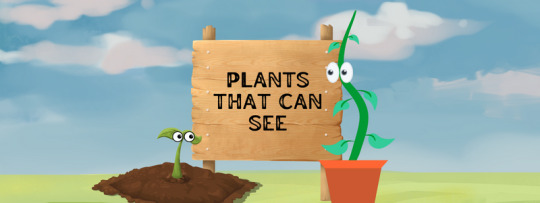
I have talked about in a previous post that plants communicate, as well as feel and smell in the unique way they do, but can they see?
I went into this subject as skeptical as you’d likely expect. After all, if something can “see,” then we expect them to have eyes, right? I certainly have not seen eyes on the tree in my back yard. Thankfully, not all people think like me, though, and one of those people was Charles Darwin.
Darwin started experimenting by putting canary grass in a room with a dim candle, and noted that even in the dim lighting, the plant bent towards the light(Heliotropism).
“Heliotropism prevails so extensively among the higher plants, that there are extremely few, of which some part, either the stem, flower-peduncle, petiole, or leaf, does not bend towards a lateral light.”
Charles Darwin
So how was that canary grass sensing where the light was? Darwin speculated that the “eye” of the plant was at the very top of it. Essentially, something at the top would sense the light, then that would send signals downward through the plant, telling it to move.
To test his theories, he tried cutting off the very top on one plant, covering the top of another with a hood, then put a glass hood on one more. The first two stopped leaning, while the one with the glass hood continued moving.
“This discovery suggests that plastoglobuli in plants may act as eyespots,” Baluška says.
Scientific American
His research led scientists to realize that plants monitor their visible environment all the time. For example, if you record a video of a seedling with a single light source and move that light source occasionally, you can see the seedling moving(though slowly) to chase the light.
Here is an example of that
youtube
Plants can sense both infrared and UV lights, which we are both blind to, they can sense both dim or strong light as well as what direction it is coming from, and they know if something is blocking their light.
While humans see with eyes, they sense with cells.
You might think that might be it, but I have one more interesting plant to introduce. Boquila Trifoliolata is a very unique plant for one simple reason; it mimics other plants. First, it vines around it’s target plant, then it matches the target right down to the the shape of the leaves, the color, and the size.
It does not actually need to touch the target in order to mimic it, which led some scientists to believe that it was smelling the other plant, until recent studies tested the Boquila with fake plants.
“A simple experiment by placing an artificial vine model above the living plants has shown that these will attempt to mimic the artificial leaves. The experiment has been carried out with multiple plants, and each plant has shown attempts at mimicry.”
Jacob White & Felipe Yamashita | Tayor and Francis Online
If the Boquila does not need to touch the fake plant and can not smell the fake plant, that likely means it is seeing the fake plant.
#nature#NatureScience#nature facts#naturefacts#naturescience#nature science#plants#forest#amazingnature#ecology#garden#gardening#Youtube
11 notes
·
View notes
Text

Camp Site Selection | Wilderness Survival Tips
Where you put your shelter is just as important as having one. Most people new to camping and survival tend to think choosing a site to set up camp is as simple as throwing down a tent. In reality, however, there are some things you should look for before building a shelter.
Water. Have it within close walking distance to a water source, but far enough away to avoid direct contact with animals and insects. Animals will come to drink throughout the day and night so you will want to be far enough away that they can choose to avoid you, but close enough that you do not burn many calories to go and collect more.
Wind. Look for a location with a natural wind-break. This could be a fallen tree, a live treeline, or something else. Alternatively, look for a location where you could build your own wind-break if one is not naturally available.
Sun. For extra warmth, the entrance to your shelter should face towards the rising sun. This is an old trick that many campers enjoy.
Wildlife. Avoid locations with animal trails passing through. Animals can be creatures of habit so they will want to follow the same paths they always do. Choosing somewhere else can limit the number of unwanted visitors passing through your camp.
Check the location for biters like ants or wasps. Avoid building near swampy areas.
Drainage. Do not put your shelter at the bottom of a hill. Do have it somewhere slightly sloped to allow for drainage. Never put your shelter in a gully even if it appears to be dried out.
Fire. The fire should be placed directly in front of your shelter, so make sure there is room for it.
Materials. To conserve calories, your shelter should be close to building materials as well as fuel for your fire.
#camping#WildernessSurvival#wilderness survival#survival#survival shelters#survivalshelters#outdoor survival
1 note
·
View note
Text
Dinosaur Provincial Park | Alberta, Canada

Hikes: Trail of the Fossil Hunters(40 min), Cottonwood Flats (1 hour)
Hike Types: Easy
Bring: Hat, sunscreen, plenty of water
Note: Beware of rattlesnakes. Do not walk through brush. Only 5 trails allow dogs.
Prior to this trip, the last time I was at Dinosaur Provincial Park was when I was a kid. Perhaps due to an accident when I thought surfing down the sand dune was a good idea and landed on my head and broke and arm…I did not remember it much.
So, as a curious adult, I grabbed my dog and a friend and went to Dinosaur Provincial Park.
It turns out that most of the trails need a guide and so do not allow dogs, but so that left us with 5 options left.
Primarily we walked the Trail of the Fossil Hunters (which does have cased-in fossils) and Cottonwood Flats.
The Trial of the Fossil Hunters leads to a 1913 quarry site, while the Cottonwood Flats is ideal for bird watching and a bit of shade.
Overall, it was worth the visit. However, I would like to go back someday and visit those trails that dogs were not allowed on.


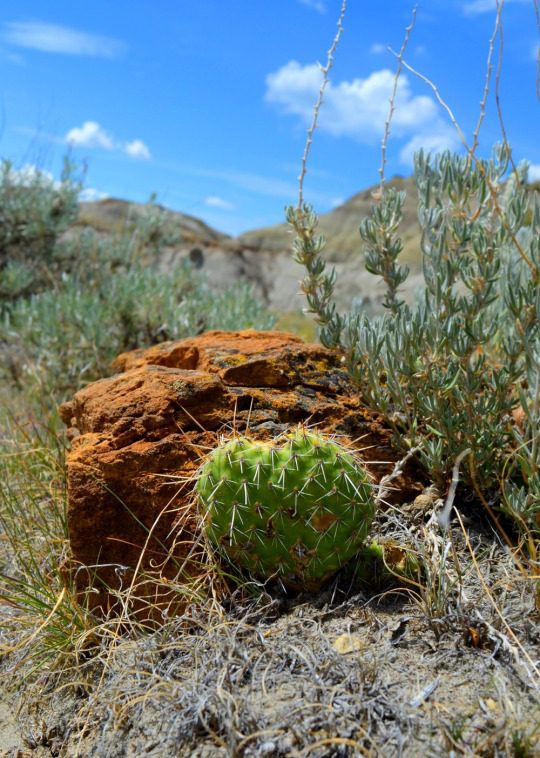
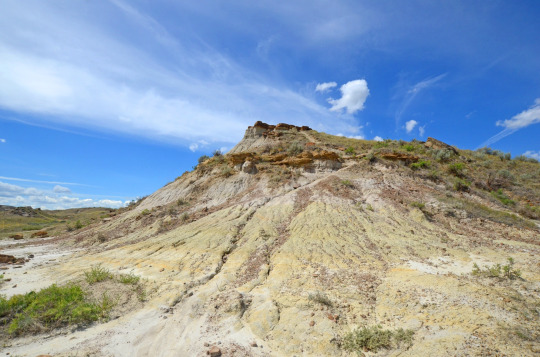

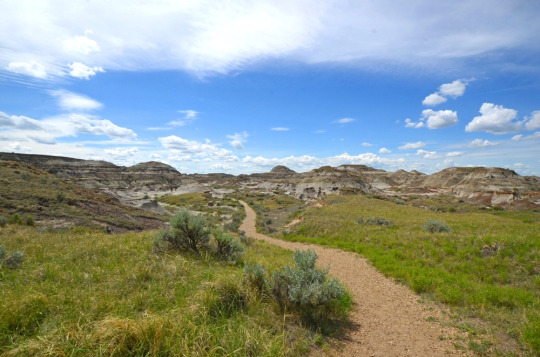
1 note
·
View note
Text
Do Plants Hear and Feel? 👂🌱

In 2019, the world was buzzing(pun intended) over news that a study announced that some flowers will add more sugar content to their nectar if they sense a pollinator approaching. It has to do with the exact vibrations of the sound, which researchers discovered by playing different pitches of sound by flowers.
"Blossoms exposed to silence as well as high-frequency and intermediate-frequency waves produced the baseline amount of sugar expected in their nectar. However, the blooms exposed to the bee’s buzz and low-frequency sounds bumped their sugar content up 12 to 20 percent within three minutes of being exposed to the hum. In other words, when they “heard” a bee approaching, they sweetened their nectar."
Jason Daley, Smithsonian Magazine
So what is happening with the bees?
Since some of you are likely thinking about it, it is worth noting that the “plants grow better to classical music” study is still currently being debated. However, it has been recently discovered that roots will bend towards sound (phonotropism) which actually explains why roots grow towards and wrap around water pipes.
You might argue that that is not hearing, it is just sensing vibrations, but that is exactly how humans hear as well.
"When we hear something, we are sensing the vibrations in the air. The number of vibrations per second is known as the frequency, measured in Hertz (1 Hz = 1 vibration per second)."
Science World
I am not implying plants “hear” in any way that could be described like we do, just that they notice vibrations from sound, and their cells are programed to react to that.
On a more creepy note, some plants even scream at a frequency we can’t hear when they are stressed. This could be a defense mechanism to keep pests away from the open wound, but it could also alert other plants, which would imply that the other plants notice the sound.
“-stressed plants emit airborne sounds that can be recorded remotely, both in acoustic chambers and in greenhouses. We recorded ∼65 dBSPL ultrasonic sounds 10 cm from tomato and tobacco plants, implying that these sounds could be detected by some organisms from up to several meters away.”
bioRxiv
youtube
As well as that, Cleve Backster — the founder of the polygraph machine(a machine once used to see if people were lying) — came up with the still debated theory that plants have “feelings.”
Backster came up with this theory after he attached the polygraph to a leaf and recorded reactions
The polygraph machine has since been disproven on humans and does not work for detecting lies, but the tests for plants made a resurgence thanks to the show Mythbusters. In the episode, they secluded a plant from noise and other distractions, attached the plant to the polygraph, and started testing the plant. When a leaf was hit by a person, the polygraph would move. Spikes increased with hits from fire extinguishers.
So while Mythbusters might not be the most trusted source, it would seem that plants do have an electrical reaction to pain. What this means, or if it means anything, is still controversial (though not nearly as controversial as Backsters claims that plants react to thoughts).
"Given that plants do not have pain receptors, nerves, or a brain, they do not feel pain as we members of the animal kingdom understand it."
Britannica
Similar to Backster, however, is the work by Neuroscientist Greg Gage.
He points out that plants feel and move with the sun, but also that the mimosa plant will curl up and close if touched. If the branch is tapped, the entire plant will go limp. This reaction shows on an EKG.
As well as that, he shows that the Venus fly trap(a quick will closing carnivorous plant), will count the seconds between the touching of trigger hairs within the trap. It will not close if the right amount of trigger hairs is not touched within the right amount of seconds. This is to conserve energy since it can take a whole day to open up again, and a trap can only open a handful of times before it dies.
Arabidopsis (a mustard plant commonly used in scientific studies) sends out electrical signals from leaf to leaf when it is being eaten by caterpillars or aphids, signals to ramp up its chemical defenses against herbivory.
Britannica
So can plants hear and do they have feelings? The answer is a complicated yes.
youtube
#nature#plants#NatureScience#nature facts#naturefacts#naturescience#nature science#outdoors#ecosystem#environment#enviromental#Youtube
2 notes
·
View notes